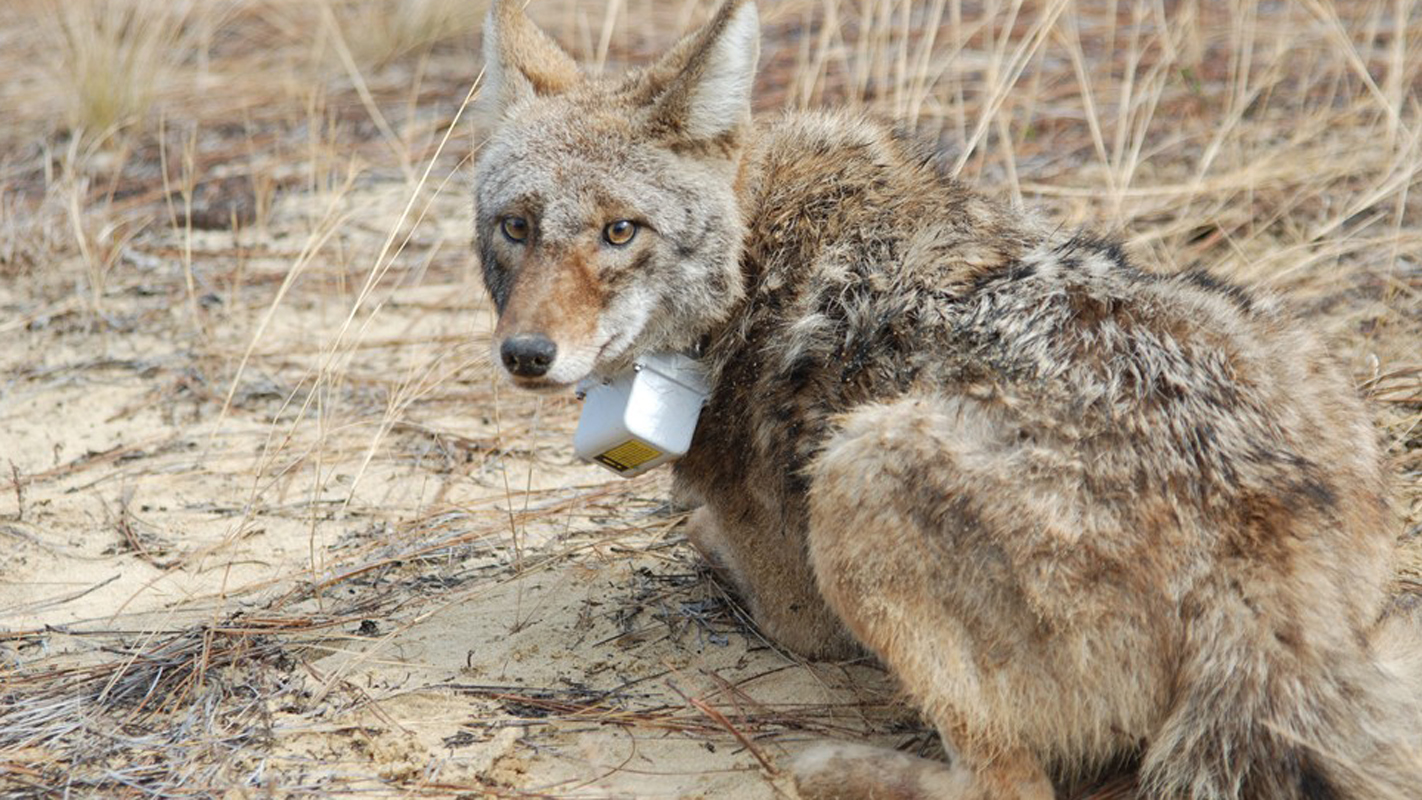A New Top Dog in North Carolina

Editor’s note: The following article is a guest post by Chris Moorman and Chris DePerno, professors of fisheries, wildlife and conservation biology in the College of Natural Resources.
It’s believed that wolves once roamed the southeastern United States before they were eliminated by overhunting and habitat loss. Now the region has a new top dog, the coyote, which may fill the role once played by wolves.
Coyotes are native to western North America but moved to North Carolina only in the last few decades. Because coyotes are strangers to the region, relatively little is known about how they affect the environment, especially prey populations. A series of recent studies conducted at Fort Bragg by NC State researchers sheds some light on the lives of coyotes, showing that they range widely across the landscape, with the annual space they cover averaging 33 square miles. Some individual coyotes dispersed up to 214 miles away from Fort Bragg before establishing new home ranges.
Coyotes ate a variety of foods, including insects, fruits, mice, rabbits and white-tailed deer.
Most impressive was the apparent top-down influence coyotes had on deer populations at Fort Bragg. A recent paper in PLoS ONE showed that coyotes killed one out of every two deer fawns born.
“Only 14 percent of fawns survived for the first 16 weeks of life,” says Colter Chitwood, the study’s lead author, now a postdoctoral research associate at NC State. “With such low survival, the deer population inevitably is in decline.”
Chitwood and his colleagues also document four instances where coyotes killed adult female deer, adding to the evidence the species may be filling the niche once occupied by wolves in the region. Although wildlife scientists are only beginning to understand how coyotes affect native plant and animal communities, Chitwood suggests that deer herd managers will need to make adjustments where coyotes are suppressing deer populations.
- Categories:


